






What do international associations, conference organisers and participants expect from a meeting location? Find the answers in this guide.
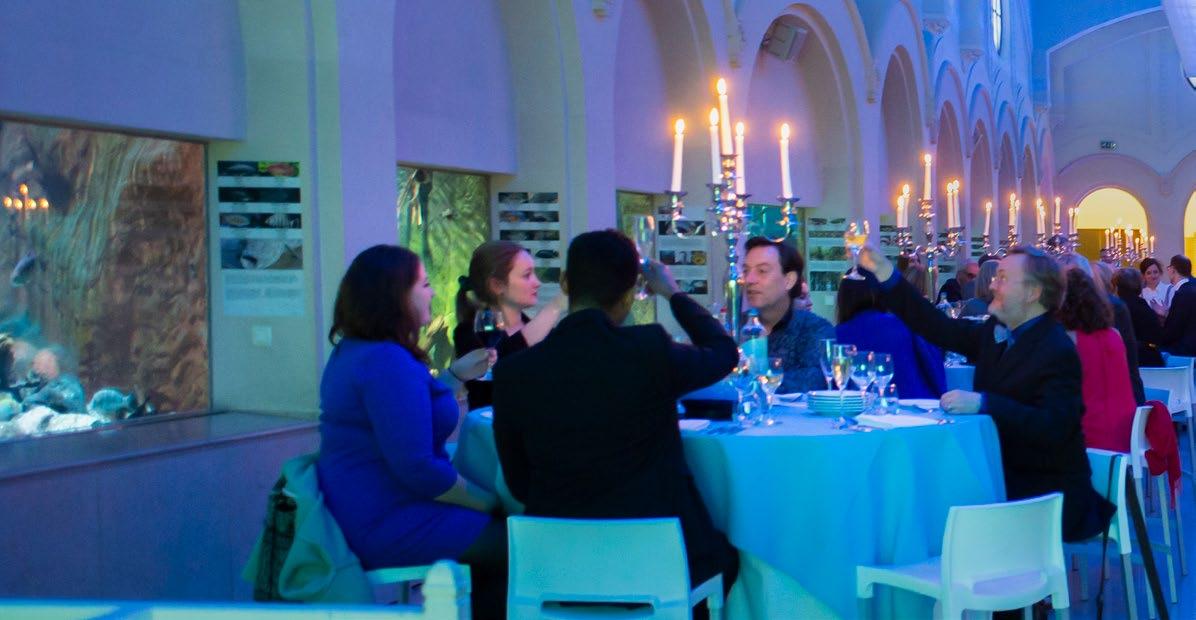
VISITFLANDERS wants to make our region a leading international destination for meetings and conferences. We focus our efforts in this regard primarily on international associations. For this reason, it is important that as many meeting venues as possible offer the quality that these associations expect. To facilitate this, VISITFLANDERS has developed a guide in 2019 in collaboration with IDEA Consult. This guide was updated in 2022 in response to changing trends and expectations in the international meeting industry.
The information offered in this guide is based on research from various sources and studies about the current and future quality requirements and expectations in the international meeting industry. IDEA Consult also gathered five experts together to gain their perspectives. It also studied a number of leading international meeting venues as a benchmark. Finally, in a sounding board session with nine meeting professionals from Flanders, IDEA Consult refined the content of this guide. A similar expert panel was also consulted for the update of the guide
The result is a document that can be used for self-evaluation. Useful checklists show to what extent your venue matches the international expectations. Tips and trends are provided for inspiration. We make a distinction between the basic requirements and the ‘optional extras’, which are additional assets that could give you an advantage in the international market. We focus on three aspects: management, service and infrastructure. Accessibility, accommodation options, political context, price, climate, sales and marketing and other elements all play a role when selecting a meeting venue, but we will not be considering these aspects here.
As you know, VISITFLANDERS wants to attract an international audience. The guide is primarily intended for meeting venues in Flanders that either operate internationally or foster an ambition to do so. At the recommendation of the experts we make no distinction between the varied range of meeting venues in Flanders. Whether it is a conference hotel, a dedicated conference centre, an exhibition centre, a museum or a heritage location, international organisers and participants have the same general expectations from meeting facilities and services.
This guide is part of the professionalisation programme that VISITFLANDERS has developed to support the meeting sector. The international meeting industry has high expectations. When choosing a venue, many factors play a role. With a customer-oriented attitude, flexibility, creativity, professional service, a solid network of partners, and a unique experience you can make a strong impression. This is where the opportunities exist for the sector. Consider the guide as a tool for the continued development and improvement of the quality of your meeting and conference location.

In this guide, we will pay particular attention to international associations. Their meetings and conferences have a unique dynamic. To allow you to respond to this, we will share some insights into their expectations.
Associations organise a wide range of meetings: training sessions, workshops, information sessions, development programmes, technical committees, networking opportunities, seminars, board meetings etc. In addition, there are the annual conferences. They often span several days, have a pre-determined programme and usually have multiple sessions running simultaneously. Most importantly, they are a crucial source of income. Therefore, associations go to great lengths to ensure that their conference is a top-level event.
Quality is the keyword. Your infrastructure will determine to a large degree whether you succeed in attracting international conferences and meetings. In addition to this, the accommodation available in the area, your accessibility, the destination etc. play an important role; however, as we stated earlier, we will not be taking those factors into consideration in this guide. Furthermore, it is important that you can respond to the expectations of the organisers during the planning and execution phases. They want to be sure they can rely on you before they choose your location. That is why we will not only discuss the quality of the infrastructure, but also the service and management.
A lead time of five years or more is not unusual. Each association conference is a multiyear project, which is systematically monitored and followed up. Therefore, draw up a long-term plan and coordinate it with local players (suppliers, authorities, etc.).
Participants may be travelling from all corners of the globe. Therefore, your employees should be multilingual. At the very least, they should be able to communicate in English.
The average number of participants is 150, but there may be several thousand in total. Therefore, allow planning partners to assist you. Many venues work with associations and intermediaries (e.g. professional conference organisers). Intermediaries often take on the actual organisation and planning: either partially or completely.
The larger a meeting, the more extensive the technical and logistical challenges. A major conference calls for a more extensive preparatory and coaching team. More participants bring with them a (proportionately) greater number of seats, parking facilities, cloakroom facilities and sanitary facilities. As a meeting and conference location, you do not necessarily have to provide everything yourself. The solution can often be found in flexibility, creativity and the help of external services.
This guide outlines the international quality expectations for meeting and conference locations around three themes: management, service and infrastructure. These three aspects are closely related and are impacted by the operational and investment budgets of your location.
Per theme, we will formulate recommendations that respond to the quality expectations of international associations. This will allow you to easily evaluate the degree to which your venue meets the expectations. You will also find concrete ideas for improvement. This will help you to take targeted future-oriented action that will improve your quality.

State-of-the-art venues meet the basic expectations of international associations to the greatest extent possible. We describe the tangible expectations (the hardware and facilities at your event location) and the intangible expectations (hospitality, service, experience etc.).
On top of the basic quality, we make additional recommendations:
additional initiatives for venues which want to offer a competitive edge
inspiring examples and trends
recommendations for venues, practical tips & tricks
TIPS FOR VENUES WITH LARGE CAPACITY recommendations or tips specifically for venues with large capacity
A clear policy that puts hospitality and sustainability first is a definite plus for organisers. Excellent management also strives to have a positive impact on the local region, such as improving local employment, fostering satisfied and engaged employees and creating a connective network model in which you work with local organisations, experts and businesses on a long term basis.
Create masterful hospitality.
Treat your employees as if they were your guests.
Follow sustainable and responsible business practices.
Comply with legal standards and guidelines.
Management must strive towards masterful hospitality and actively foster it.
Masterful hospitality is expressed through the contact with customers. Hospitality means that you take care of the meeting planners and participants and lighten their load. Friendliness, customer orientation, a willingness to think creatively and to work flexibly with planners contribute to this, as do clear and transparent communication - for example, about your company policy and prices.
The accessibility of your venue, the leadership style and the layout of your building also play a role in the way your customers and participants experience your hospitality. Genuine hospitality means that you make clear agreements with your customers and external service providers and fulfil these agreements.
Sets out concrete lines through a meeting and conference strategy. Do this in consultation with your team, the organisers and your external service providers. It is important that you respond to market demands, changes and opportunities sufficiently and that you involve your team. This will result in a professional approach and a dynamic execution of the agreements you make with organisers.

The meeting and conference policy is clearly communicated to our team.
Management makes and communicates decisions effectively (internal and external).
Management makes clear agreements with external suppliers for meetings and conferences.
Management and operational teams are prepared to help the organisers and intermediaries players.
The team of employees is involved in the meeting and conference strategy.
The team of employees is aware of and involved in site inspections and fam trips.
The agreements made with the organisers are clearly communicated to the team and external service providers.
The team of employees receives hospitality training or coaching.
The team of employees is multilingual. Speaking fluent English is the minimum requirement.

All employees look neatly dressed and are recognisable (badge, clothing).
The team of employees knows the products and services available at the venue.
You actively ensure that the venue is accessible to people with disabilities and communicate about it. O
Create a plan.
Ensure that the agreements you make with the organisers are communicated to and understood by the team. Internal briefings in various phases of the planning process streamline the transfer of information. An internal script can help with that as well. You could use planning software to do this. The roadmap should include the planning, division of tasks and timing of any potential deliveries. Any sensitive issues or problems that arise during the planning process should also be included. Tip: remember to brief all the employees about the organisation team. Provide them with the names and photos of important people (speakers, participants politicians) and the people with whom they will be working closely.
Regardless of their position, each employee at your venue will receive questions from organisers and participants. The way your employees behave around visitors can affect how comfortable the participants and organisers feel.
By including your employees in the policy and encouraging them to contribute, you increase their job satisfaction. This enjoyment is picked up on by the visitors. Good briefing and training on the job is therefore essential. You should listen to feedback from employees if you want to improve the quality.
For example, you could hold a short internal evaluation after each meeting and conference. This will allow your employees to be informed of any problems that occurred, so they can avoid them in the future. Integrate the solutions in the operations. Employees should be encouraged to follow trends and developments within their specific work areas, participate in (international) training networks and contribute ideas for improvement.
Employees receive regularly training that is relevant to their range of tasks.
The team of employees has a thorough (product) knowledge of the venue, the facilities offered and the available techniques.
The team of employees provides feedback based on their practical experience.
Input from the employee team is valorised within the policy.
The team is encouraged to participate in peer-to-peer meetings, workshops, etc.
Sustainable business practices lead to the creation of economic, social and environmental prosperity. Each venue can contribute to this. Outstanding entrepreneurship is not about dreaming, but about doing.

The sustainability of a venue is increasingly seen as a ‘hygiene factor’, i.e. it does not stimulate extra demand directly, but if the sustainability aspect is missing then customers may look elsewhere. Especially for civil society organisations - including many international associations - sustainability is a prerequisite.
Create a venue-appropriate sustainability strategy. Analyse your activities and look for sustainability measures that fit within your organisation and are important to your stakeholders. Draw up a priority list with concrete and measurable steps towards sustainability. This will ensure that your venue can contribute to organisers’ sustainability goals. It's the ideal way to create a win-win situation. Make sure you communicate about your sustainability strategy. For participants, ethical and environmental factors can play a role in whether they decide to participate in a meeting or conference. For example, clearly communicate that you serve organic meals, that you monitor your carbon footprint or offset CO2 emissions to the maximum, that you collaborate with social organisations with local impact, or that your guests can participate in a tour with a local ('like a local', 'with locals' ...).
• Take energy and water-saving measures, focus on renewable energy sources such as solar panels, use rainwater in sanitary facilities, etc.
• Work with reusable materials, reduce your material footprint, avoid the use of single-use plastics, use biodegradable soaps, etc.
• Offer tap water, support the shift from animal to vegetable proteins, prevent food waste, etc.
• Build a network of quality service providers: work with local suppliers and producers (local products, organic food, short supply chain etc.), accommodation providers, host and tour organisations, speakers and moderators, photographers etc.
• Take part in employment initiatives for disadvantaged groups, work with social organisations, encourage local residents, knowledge institutions and students to participate in a conference etc.
• Keep your stakeholders informed of what you are committed to and how you are addressing this. Show how you are progressing. Prepare a quality sustainability report or impact measurement. Create an infographic, post a video on your social media and valorise your efforts with a sustainability label.
An appropriate sustainability strategy has been integrated into your venue’s overarching policy. O You inform your employees about your sustainability objectives and measures. O Sustainable measures are deployed based on a list of priorities with feasible and measurable targets. O You communicate about your sustainability policy and the goals you have achieved. O You are proactively building a local network of service providers and products. O You actively ask about the sustainability efforts that a supplier or producer makes. O
• The Sustainable Development Goals (SDGs) are a worldwide plan to combat poverty and to create a sustainable future. The tourism sector can make a significant contribution to this. The UNWTO (World Tourism Organization) created a digital co-creation information platform for this purpose. You can read more about how tourism businesses can contribute to sustainability here: tourism4sdgs.org/act/companies
• The Green Globe International Standard is an ambitious certificate aimed at sustainable tourism and business management. The guidelines and criteria have been developed over the past three decades based on (field) research. They aim to support innovative sustainability initiatives and optimise the business for visitors, employees and the local community. It is the original sustainability standard on which various eco-labels are based. More information at: www.greenglobe.com
• The international Green Key label for sustainable tourism businesses is linked to the SDGs. You can find more information about this programme here: www.greenkey.global
• You can find an extensive list of criteria for hotels and meeting venues in Flanders here: www.groenesleutel.be/uitbaters

• The Sustatool, developed by the Knowledge Centre for Sustainable Entrepreneurship, supports, among other things, the hospitality and tourism sector to work on a sustainability policy in the context of corporate social responsibility. The tool is an accessible management process with a systematic and practical approach to support you in implementing your sustainability projects. You can find it at www.mvovlaanderen.be/sustatool/home
The city of Gothenburg is a world leader in sustainable meetings and the greenest hotel city in the world. Organisers of meetings and conferences can expect environmentally-friendly infrastructure, accommodation, logistics and other sustainable services. The Gothenburg Convention Bureau works with the organisers to assess how a meeting can contribute to positive change, help reach their sustainability goals and how they can communicate about this. They give the following tips: encourage participants to travel with public transport, work with accommodation providers who have an ecolabel, encourage gender equality, support local organisations etc.
You can find more info here: www.goteborg.com/en/convention-bureau/sustainability
The Bella Center Copenhagen is part of BC Hospitality Group. Striving for sustainability is embedded in the future strategy of the company. It adopts a 360° strategic approach to sustainability under the heading ‘Responsible Hospitality’. They are succeeding in many different ways: community engagement (e.g. career opportunities for disadvantaged groups and the unemployed), job satisfaction among employees, health, safety and security of customers, guests and employees. Want to know more? www.bellacentercopenhagen.dk/en-GB/About-us/Responsible-hospitality.aspx
Hilton Meet with Purpose Purpose is a programme that connects the sustainability goals of Hilton with those of the organisers of meetings and conferences. The focus is threefold: reducing CO2 emissions based on a ‘Meeting Impact Calculator report’, promoting the well-being of the participants and the local community and aiming to have a lasting impact on both the participants and the local community. The management programme ‘Lightstay’ allows monitoring and management of carbon emissions, waste processing, water and energy consumption and other environmental indicators.
Learn more at: meetings.hilton.com/meet-with-purpose
Bringing people together implies a great responsibility for safety, health and well-being. It is important that you adhere to all regulations that apply to the meeting infrastructure. They will (partly) differ depending on the location of the venue. Management must ensure a correct implementation of matters such as:
• the accessibility of public buildings;
• the prevention policy (well-being at work);
• fire safety and fire prevention (e.g. stairs, doors and compartment dimensions etc.);
• environmental regulations and inspections (e.g. heating and cooling installations);
• building regulations (e.g. building volume, facade cladding);
• HACCP standards (food hygiene), hospitality licences and certifications;
• GDPR privacy regulations,
• guidelines on ventilation and air conditioning in rooms,
• data security guidelines.
Want to make meetings and conferences as accessible as possible? VISITFLANDERS and Inter Vlaanderen have created a handy checklist for meeting locations: ‘Accessible meetings and conferences: a checklist’. Both organisations offer numerous services to help you optimise your accessibility, such as a guidance programme for meeting locations.
Discover it at: www.toerismevlaanderen.be/toegankelijke-meetings-en-congressen
The health and safety of all those involved and/or those present at a meeting or conference are central. Ensure that you can respond quickly and flexibly to changing circumstances and bring your venue in line with the applicable measures. Ensure good hygiene and ventilation.
The Alliance of Belgian Event Federations (now Event Confederation) aims to work on a long-term vision for the meeting and conference industry. In consultation with various government institutions, work is underway on an ambitious “Event Charter 2025”. Discover it at www.event-confederation.be.
Organising a meeting or conference, or participating in one, can offer many benefits. Organisers and guests can consolidate their professional network and expand it, share knowledge, discover new ideas and gain experience, generate new business and so on.
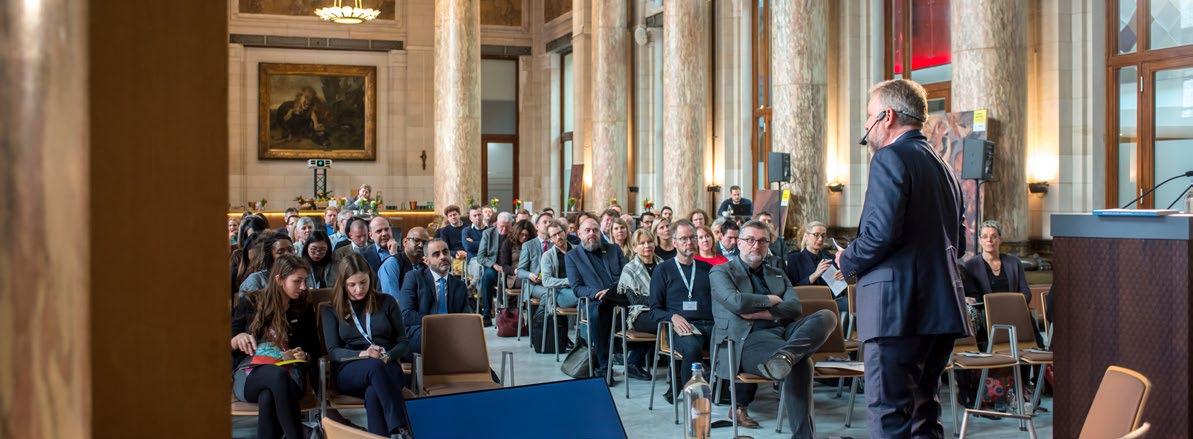
Yet the experience is largely dependent on the service provided by your operational team and external partners. Therefore, it is important to respond to the demands and expectations of the conference target group proactively. Follow trends and evolutions in the meeting industry and focus on digitisation. Surprise people with unique experiences, not just by investing in infrastructure. Actively support the impact that the organiser is seeking with the meeting or conference.
Approach your business as if it were a team sport..
Build a network of service providers.
clearly.
a carefree environment.
Providing service to organisers is a team effort.
You must have a professional approach during all phases, from the ‘sales and site visits’ to the preparations and execution of the meeting or conference. There is so much planning and production involved in a meeting. In the entire process — before and during the meeting — every employee becomes the face of the venue and the destination: the planning team and the reception, technical and kitchen staff.
The motivation and engagement shown by your employees is crucial to provide excellent service. They are a sounding board for organisers, solve problems, respond to requests, answer endless questions and are often the last to leave the venue.
You have a single point of contact who is the contact person for the customer and external suppliers until the contract has been signed.
The planning team creates a script and briefs the entire team on it.
The event supervisor/conference manager manager of the venue ensures an efficient running of the meeting or conference.
Customers and suppliers also have a single point of contact during this period.
The hospitality staff are dedicated to spontaneously making people feel welcome. They have substantive knowledge of all the venue’s products and services, refer to colleagues where necessary and respond quickly and to the point.
The hospitality staff have extensive product knowledge of the (leisure) offer in the surrounding area (cafés and restaurants, ATMs, praline shop, supermarket, etc.)
The technical staff have a thorough knowledge of the venue's technical equipment, can refer specifically to the expert concerned and have a good knowledge of systems on the market. O
The technical staff provide technical support during all phases of the organisation of a meeting or conference (pre-check, assembly, during the event and during dismantling). O
The technical staff stay up to date on developments in techniques and technologies and can provide more information about them if necessary.
Staff, including technical staff, are able to handle problems.
Organisers can use their own equipment on location. Your venue can offer them technical support with this.
The kitchen team (or the caterer) responds to food trends, dietary requirements, last-minute requests etc.
The seating team has product knowledge and masters operating techniques.
Build a network of quality service providers. Ensure that they are on board with your sustainability policy. This will ensure that you create the maximum local impact and that it generates more value for your organisers. Strive to create a comprehensive package of services, aimed at relieving the burdens of the organisers.
Work with a pool of professional conference organisers with whom you have had a good experience and make clear agreements. The organisation can rely on these partners. Work closely with local tourism organisations and the convention bureau. They can help you with your business presentation and to highlight the assets of the destination. Stay up-to-date on the latest trends and developments via workshops and training.
• Make agreements with accommodation providers.
International meetings and conferences attract international participants. They prefer to stay in accommodation close to your venue, that takes good care of them. Approach hotels and B&Bs in your area and make agreements regarding prices and services. You can introduce these premium partners to the organisers. If you have a fixed pool of partners, you can offer them possibilities in different price and quality ranges.
• Offer contemporary catering.
The catering must be healthy and varied. Special requests are the new normal. Less meat and more vegetables is a trend that will only continue. The use of seasonal, fresh and local products remains crucial. Give participants the opportunity to try local specialities and dare to give them your own unique twist. In brief, serve exquisite food and drink. If you don't have an own kitchen team, work with external caterers. This gives organisers more options and you can adapt to their quality and service requirements.
• Provide sufficient parking spaces.
Does your venue not have a car park? Make price and reservation agreements with local car park companies. See if you can offer exit tickets. Make sure the car park company pays par ticular attention to the safety of the participants (e.g. lighting). Ask if they can be flexible with regard to participants arriving earlier or later (see also: 6.1 on p.23).
• Make agreements with taxi and coach companies.
Set up agreements with taxi and coach companies for transporting participants: e.g. to and from the hotel, the airport etc. Sometimes organisers need shuttle services for activities at other locations (e.g. opening events, galas, social events, field trips etc.).
• Give a warm welcome.
Offer organisers the option to place banners, personalised signs etc. in your car park and at the entrance to your meeting location. Make agreements with printers so the organiser (or you) can print items locally. Place adverts or signs to the conference: e.g. on the driveway, access roads, in the city or at the train station.
• Provide a plug-and-play basic technical infrastructure.
At the very least, provide a basic plug-and-play technical infrastructure: sufficient power sockets, wired and wireless internet with sufficient bandwidth, suspension and cable systems etc. All materials and equipment that the organisers bring themselves must be able to be easily plugged in and must immediately function correctly, and this in different places at the venue. Do you already have a basic infrastructure for meetings and conferences? Always keep it up to date (see also: stateof-the-art infrastructure). (see also: state-of-the-art infrastructure)
• Offer a platform for hybrid events.
Meeting and conference organisers increasingly opt for a physical event with virtual parts, with both parts responding to each other. They know the technical possibilities for online interaction, streaming live sessions or sharing recorded content afterwards. But playing a pre-recorded keynote speaker and then a live panel discussion is also among the options. Clearly communicate what is possible in your venue in terms of hybrid events. Offer an external supplier to facilitate a hybrid event and to provide the right equipment and framework.
You work with local tourism organisations and the local convention bureau.
You have a list of accommodation addresses.
You have a pool of caterers who respond to food trends and expectations.
You have made price and reservation agreements with local car park companies.
You have made agreements with taxi and coach companies and shuttle services.
You create visibility for the conference organiser: in the area around the venue and at the venue itself.
You offer a printing service (signs, banners etc.).
You offer opportunities or suppliers to hire plug-and-play equipment and technical support (projectors, screens, light & sound, etc.).
You offer opportunities to facilitate hybrid events and provide the right equipment and framework. You do this yourself or through cooperation with external partners.
You clearly communicate what is possible in your venue in terms of hybrid events.
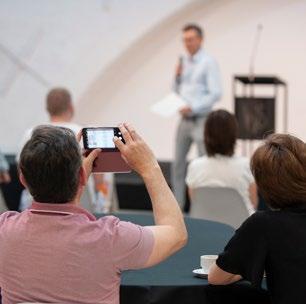
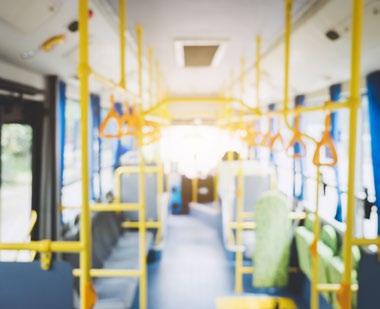
Hospitality staff outside the meeting venue using flexible desks. This is useful for referring them easily to a shuttle service, for example. Check the possibilities with the municipal services and inform organisers about them. For participants it should be clear that they are in the right place and where they are expected to be. This makes them instantly feel welcome!
Be discreet about participants’ diets. Subtle differences in table settings can indicate which participants have an allergy or dietary preference. This means you don't need to ask them directly. Provide full information for every meal at the buffet: even the vegan and gluten-free meals. Add interesting facts about the local specialities.
Combine regional beers, wines or gins with small meals for an exciting flavour experience. This creates a tasty sensation. The participants will also learn more about the destination in culinary terms. Use plantbased meals to respond to the growing interest in organic, vegetarian and vegan.
Suomenlinna is a UNESCO-protected sea fortress, built on six islands on the coast of Helsinki. The location is only accessible by ferry from the centre of the Finnish capital. There are seven different meeting locations spread across two islands. On the islands there are limits placed on traffic (max. 20 km per hour). People travel mostly on foot or using a bike taxi. Water buses and taxis provide transport between the islands. Organising a meeting here is a logistical challenge. However, unique meetings take place without a hitch due to intensive cooperation with local and external service providers (transport, catering, entertainment, photography etc.). All service providers are on the same page as Suomenlinna when it comes to their sustainability strategy. Want to know more? www.suomenlinna.fi/en
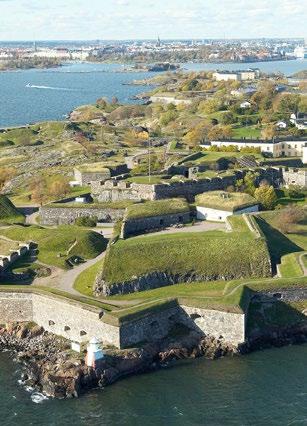
Travel is not always necessary. Online participation has made it easier to programme international speakers as keynote speakers. An international speaker can easily be present via a live stream and interactions can be set up. A pre-recorded video can also be used, for example at a special location.
Locations that proactively and creatively anticipate the potential needs of the organisation or the participants often have a competitive advantage. Here are a few services that can impress your guests:
Make agreements with other service providers and offer a cycling service. Participants that want to explore the area can easily hire a bike (and store) at your venue. You can also direct them to bike sharing stations. Tips from reception staff about locally marked and signposted routes can be a nice extra for the guests.
Social activities before, during and after the conference are the ideal opportunity to get to know the destination. Work with other stakeholders in the city or region. This way, you can create added value for the local economy. Offer organisers a pool of restaurants, pubs, attractions, museums and local tour guides. This will help them when putting together a social programme. Tip: your local convention bureau will be happy to help.
Boost creativity and productivity with miniincentives: during the conference and even in the meeting rooms. Surprise participants with a musical interlude, game, fitness training, yoga session or massage. These micro-moments provide breaks. Can’t offer this yourself? Make agreements with specialised companies in the area and include them in your offering.
You can also hire other external partners: hostess agencies, moderators, speakers, workshop leaders, photographers, interpreters (and suppliers of technical equipment, such as interpreter cabins), suppliers of decorative items, plants and furniture or technical equipment (network boosters, laptops, cameras for live streaming), external IT and AV professionals and security services.
There is a check-in service.
There are cycling facilities.
You have a pool of restaurants, cafés, museums, attractions and tour guides for social programmes.
You have a pool of providers of micro-incentives (gaming, fitness, yoga, massages etc.).
You have a list of hosts.
You have a pool of moderators, speakers, workshop leaders etc.
You can hire interpreters and the necessary equipment (cabins, headsets etc.).
You can hire decorative items and furniture.
You can offer suppliers of IT resources (network boosters, laptops, cameras for live streaming etc.) and IT support.
You can set up AV productions and s upport them.
You can hire security services (e.g. security, access control).
Attendees arrive at the airport, rush to a taxi and arrive at the registration desk just in time. No time to check in at the hotel first. This a scenario that occurs quite frequently. And not all hotels have an online check-in service. The solution? Your venue can offer a check-in service. This means participants can attend the conference without having to worry about checking in and can pick up their hotel key in the hotel lobby later that day.

Clear communication: it is a form of hospitality and good service. Being findable online is essential, as is a responsive website. Both planners and participants will frequently consult your communication tools. For planners, transparent communication about pricing is a must.
Your website should be multilingual. It must provide information about your venue, your business philosophy, the halls, the facilities and other services. Show planners the possibilities using floor plans, 3D visuals or a 360° virtual tour. Inspire them with images of meetings and conferences that have already taken place at your venue. This will give them an idea of the possible hall configurations. You can also give them information about the features of the halls (daylight, furnishings) and the technical equipment in the halls (lighting, air conditioning, IT, AV etc.).
Explain the route.
Give information about your location, the route and the destination. Provide detailed information about the transport from the airport, by public transport (train, metro, bus) and by taxi or water taxi. You can link to external service providers (airlines, public transport companies and taxi companies). Provide indicative prices where possible. You can also share information about current traffic problems (e.g. detours, roadworks, etc.). Provide information about routes to your venue and the car park(s), including GPS coordinates..
Online interaction is part of a meeting's experience. Use or create a website to help highlight the meeting, provide useful tips and announce the programme. In addition, make sure that the website is responsive and adapts to the screen on which the visitor views the website, whether it is a laptop, smartphone or tablet. With a meeting hashtag, participants can interact with each other and the organiser during the meeting. Sharing on social media gives the meeting a wider reach. By using your own communication channel, you increase the online visibility of the conference.
Be transparent about prices. Your pricing policy should be transparent and unambiguous: what is included/excluded, what extra fees or taxes should the organiser and participant take into account?
Your website offers multilingual info about your meeting location, rooms, floor plans, facilities per room and other features and services.
Your website gives an overview of the (creative) layout options. O
Your website provides multilingual information about your business philosophy. O Your website is responsive and easily accessible on a laptop, tablet and smartphone. O Your website is accessible. O
Your website allows people to contact you and request a quotation. O Your website provides multilingual information about accessibility and parking opportunities in the surrounding area and on the site.
Your website shows the highlights of the destination. It also links to the website of the tourist office and the convention bureau.
Your website and other communication channels increase the visibility to meetings (before, during and after)
Your prices are transparent (inclusive, exclusive, taxes, etc.).
Your meeting packages give organisers a good start and are flexible.
Your quotations are customised and multilingual.
You clearly communicate your cancellation policy.
Involve the local media.
Get your international meeting in the local news. Local media can help put conference news in the spotlight. Put together a local press list that the organisation can make use of. Press releases and invitation to press meetings also have a local effect.

Create a meeting planner tool kit. Provide the organiser with a handy checklist and floor plans so they can experiment with the hall layout; with a clear inventory of the basic infrastructure and technological facilities. It would also be good to offer an app that allows them to try out room set-ups. Provide a crowd management plan and a visitor seating plan based on the maximum occupancy rate per room.
Gain a competitive edge.
Flanders is a rainy region. Whatever the weather, a conference that has been planned long in advance must go ahead. Therefore, ensure that the paths to your venue are of good quality. Mud and rain puddles cause discomfort. It’s not easy to change into a different pair of shoes on a conference day. You should also provide rain ponchos or umbrellas.
And why not a shoe cleaning service? With this kind of attention you will definitely have a competitive edge as a venue next time!
Demonstrate your strengths! A true story.
A company was looking for a location for the launch of a new car. They asked various venues if they could drive a car into the building. All the locations immediately said ‘yes’. However, during the site inspection, there was one party in particular that was able to convince the customer. Why? They already placed a car inside! The customer was convinced of the team's creativity and could instantly see the venue's potential.
Value local knowledge.
Meetings and conferences provide opportunities to take advantage of local knowledge and share it with a wider audience. Offer organisers the option to work with local experts in the central theme or subject. A great example: a veterinarian at Antwerp Zoo who gave a speech about Kiki, a gorilla with epilepsy, at a conference for neurologists in the Flanders Meeting & Convention Centre Antwerp (FMCCA).
Provide content for an app. With a meeting app, participants can easily plan their programme according to their preferences. They can see the route on demand, gain tips about interesting activities and rate the sessions they have attended. The app is also a tool for efficient networking. The organisers also can also gain real-time insights into the behaviour of the participants. This allows them to provide tailored services. Ensure that you can provide the necessary information about your meeting location in the right format. This will allow the conference organiser to have an app developed specifically for the conference.
Association conferences and meetings attract international participants. They are often multicultural. Depending on the country of origin, different or additional expectations and requirements apply in terms of safety, hygiene, catering, communication, etc. This guide does not explicitly address the specific market differences. However, we do provide some basic requirements that help create a carefree environment for everyone attending.
Your meeting venue must guarantee the safety of the visitors. Take safety-enhancing initiatives. Involve your employees closely. International planners often require an emergency plan. They want to see how everything is organised. Also communicate this to the visitors.
Pay attention to the health and well-being of the visitors, by offering fresh fruit. Ensure that all participants always have access to water. Your employees are aware of the applicable precautions and can react adequately in the event of a disaster.
The entire venue must be extremely clean and tidy. Guarantee hygiene by regularly cleaning, even during a meeting or conference. Provide hand sanitizers at various locations in the venue.
Organisers and participants expect the internet connection (WiFi and wired internet) to be free and stable throughout the entire meeting location and for all visitors.
There is an emergency plan with signage, emergency lighting etc.
You clearly communicate your evacuation policy (e.g. at the start of an activity).
You enquire about the availability of the local emergency services.
You regularly check all security systems before the meeting.
After each set-up, you check the safety of cables (and rigging) in every room.
The conference manager is the central point of contact. They are trained to act adequately in the event of a disaster.Staff trained in first aid are always on site.
There is a hygiene plan and the team is implementing it consistently.
Your employees are aware of the applicable preventive measures and can respond adequately in the event of a disaster.
Staff trained in first aid are always on site O First aid kits are available.
An AED device (automatic external defibrillator) is easily accessible and clearly visible
You offer free water.
You regularly clean all spaces.
You plan cleaning in collaboration with the team, and guarantee cleanliness and tidiness during the entire meeting.
During the conference, you clean the sanitary facilities every 4 hours.
You provide hand sanitizers at various locations in the venue.
In all internal spaces, you offer a free and secured WiFi connection with a large bandwidth.
Boost your vitamins. Want to give your guests a pick-me-up? Provide a snack with fruit. Give the participants the opportunity to try seasonal fruit and the unique flavours of local fruit. Work with local suppliers.

meeting location, the layout, the technical equipment in your halls: it must all be high quality and meet modern standards. The infrastructure itself plays a role in the meeting experience of organisers and participants. Make it excellent: from the car park to the kitchen.
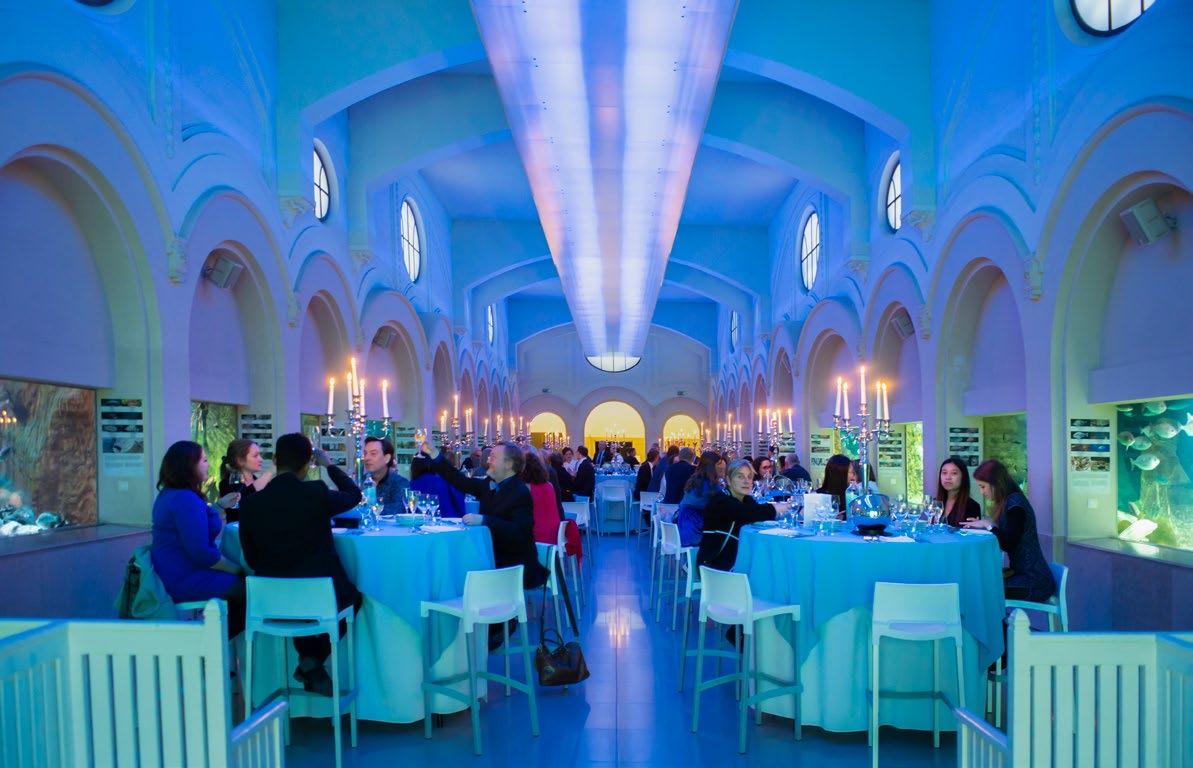
Does your venue have a car park? Ensure that it offers sufficient security and comfort. Take into account, for example, the need for different types of parking spaces and the desire of organisers to reserve certain parking spaces for themselves and the participants.

The venue has an area for taxi and bus drop-offs and pick-ups.
The venue has a car park.
There are charging points for electric cars.
There is a sheltered storage area for bikes, with charging points.
There are disabled parking spaces close to the entrance.
Organisers and participants can reserve parking spaces.
There is lighting in the car park at night.
Guests and organisers can park and leave at flexible hours (early and late).
There is clear signage to and from the entrance to the meeting venue.
Reserve a VIP spot.
VIPs temporarily at the venue, e.g. a celebrity or a politician who will leave after the opening ceremony? Or an official speaker who is not staying long? Reserve a parking space for the duration of their visit.
Prevent mud and puddles from forming on the pathways. Regularly check their quality. Are they not managed by you? Discuss them with the owner or your local government.
Keep the house style consistent. Give the organisers extra visibility including at the car park. Place signs in the organisation’s corporate style. This also applies to the indication of reserved parking spaces.
Organise a fam trip for taxi and bus drivers. This will allow the drivers to become better acquainted with your meeting location and to have personal contact with your team. It encourages greater customer-friendliness.
Is your meeting location situated on a shared site with other buildings? Pay extra attention to the entrance to your site, both for suppliers and participants. Is there a shared car park? Make clear agreements with the other partners on the site. For organisers, it is important that they can reserve a sufficient number of parking spaces for the participants.
There is a clear, visible and signposted access to the site for pedestrians, cyclists and motorised vehicles.
At the venue site, there is signage to and from the venue’s entrance.
On the site or within walking distance, there is a drop-off and pick-up point for buses and taxis. O

You reserve parking spaces for organisers and participants.
There is public transport at the site entrance or nearby.
You communicate this clearly on your various communication channels (website, app, etc.). O
Optimally organise the access to your venue for organisers, participants and suppliers. Avoid different flows of people and goods crossing each other too often.
The entrance is clearly visible, even at night (e.g. with evening lighting).
The entrance is accessible not only to persons with a physical disability, but also to persons with an auditory or visual impairment.
Is the entrance not accessible for people with disabilities?
There should be clear signs to an alternative entrance that is accessible.
Smoking is forbidden at the entrance. There is a sheltered alternative smoking area.
Suppliers have enough space to load and unload without hindrance.
Do not disturb.
Provide a separate entrance for suppliers. This prevents suppliers and visitors from bumping into each other. Keep the main entrance free from loud noises and stacks of delivered goods.
In each space where the visitors enter, you must consider the overall experience. With a well-thought-out layout, you can create a pleasant atmosphere in your venue. The practical elements also optimise the meeting experience.
Ensure that the meeting location, the organisation and the participants merge well. Place clear and customisable signage (analogue or digital) in all circulation areas. Give the organiser the option to decorate the spaces according to their branding, increase their visibility and communicate their information. For example, provide digital systems that can share information during the conference. With stickers, projections, sleeves, mobile panels, etc. you can personalise the meeting experience for the participants and organiser (e.g. on doors, lifts, reception desks, waste bins).
Keep the participants close together during the meeting or on the conference day. By this, we mean you should keep them in the same building. Provide facilities that stimulate networking. Design the meeting rooms and ‘third spaces’ (corridors, foyers, outdoor spaces) to provide the visitors with optimal comfort. Create pleasant areas where people can share ideas and lay foundations for new collaborations.
During all the activities that belong to a meeting (e.g. plenary sessions, workshops, breaks etc.) the venue should offer enough space. The comfort of the participants comes first. Therefore, maintain high standards for the appearance and atmosphere of all visitor areas, both indoors and outdoors.

Ensure a carefree meeting experience.
Guarantee safety and connectivity. Create an evacuation plan with clear signs. Provide participants and organisers with properly functioning internet. For example, provide WiFi amplifiers and backup systems.
Ensure that the fixed basic fittings (that you manage) work perfectly and are always up to date. Provide spare equipment if something does not work. In every meeting space, there should be flexible layout possibilities, entry points and systems to hide cables.
Tell the story of the meeting location, the immediate environment and the destination. Participants and organisers like to know more about the place where they are temporarily staying. Tip: tell the story through the décor itself and use photos, murals, interactive digital cards or video projections etc.
With your venue, support the lasting impact that an organiser of a meeting or conference is seeking. Actively increase the guest journey of the event for the participants by striving for added value before, during and after the event. Use a teaser to build momentum for the event and keep the experience alive. You do this together with the organiser.
Create more interaction with visitors via an online check-in service.
Ensure that participants can check in online, find information about the event and pre-order tailored catering. In this way you can get to know your guests better, indulge them and at the same time prevent food waste. You can also request digital feedback from the participants after the meeting or the conference. The venue's services can be evaluated based on visitor feedback.
The signage is multilingual.
You use universal symbols.
The furniture is ergonomic.
There are no distracting sounds from the technical systems, the kitchen or the sanitary facilities.
The audio mix in the halls is adjustable and set up correctly.
There is a flexible controllable climate system (temperature, humidity, ventilation and CO2 level).
There is a flexible, controllable lighting system.
There is sufficient daylight.
The kitchen and sanitary facilities do not spread unpleasant smells.
There is a comfortable seating area where participants can retreat for a while, make private calls, answer emails or have one-to-one meetings.
There is emergency lighting in the indoor and outdoor spaces and clear indications of emergency exits.
The wireless and cabled network has sufficient bandwidth to ensure that simultaneous use by all participants runs smoothly.
Your WiFi system can provide more coverage for participants or program parts of the event, e.g. during a live stream.
The plug-and-play equipment (projectors, projection screens, microphones, PA system, rigging systems) managed by your organisation are up to date.
There is back-up equipment available if something is not working.
The décor tells the story of the venue and/or environment.
The entrance is multifunctional. You will receive prospects, partners, organisers and participants. It must be agreeable, comfortable in terms of climate and logistics clear. Provide sufficient space for arriving visitors. The visitor facilities such as the cloakroom, lockers, baggage area and sanitary facilities should be located in the entrance hall or be able to be accessed from the entrance hall.
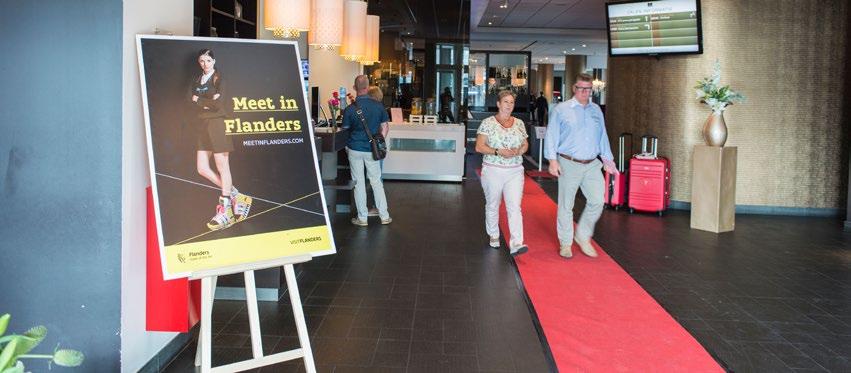
Your reception and registration point is well-thought-out and centrally located. It is far enough from the entrance to avoid traffic jams to the outside.
The registration desks can be rolled under with a wheelchair or are accessible in other ways.
Screens provide information about the meeting.
There is sufficient capacity in the entrance hall (proportional to the venue capacity).
The entrance hall has sufficient circulation room and crowds can smoothly disperse to other areas of meeting location.
Clearly marked stairs and sufficiently large lifts ensure that large groups move easily to other floors.
There is a pleasant seating area. There are leaflets or magazines to browse (e.g. if participants have to wait for an appointment).
Use separate registration desks!
It can get very busy at the start of a conference. Especially if several meetings are taking place at the same time. The result? This results in large numbers of people arriving at the same time. Separate registration desks are a must in these cases. You should place clear signage to and from the different activities.

This is the beating heart of the meeting location. The foyer or lounge gives access to all of the spaces that are important to the participants. It often serves many purposes: as a meeting place, a lounge, an exhibition or a reception space.
There is sufficient space in relation to the capacity of the large hall, with good seating. O
If necessary, the foyer provides sufficient space for receptions, poster sessions etc.
In the event of simultaneous conferences or meetings, the establishment is geared to this. O
There is comfortable seating.
The screens display information about the meeting.
All technical facilities are available: WiFi, sockets, lighting, hanging systems etc.
Depending on the capacity of the meeting location, there may be one or more large halls or auditoriums. Your meeting location must have at least one large hall for all participants. This is where the plenary sessions are held. They usually take longer than one and a half hours. The layout of this hall should ensure the comfort of the participants. There must be a quality, basic technological infrastructure that is easy to use. Various speakers or panels will use the podium and the technical equipment. To fit the room according to the plug-and-play principle, there must not only be enough sockets, but also cabled and wireless internet with sufficient bandwidth and the necessary hang-up and cable systems.
There is at least one large hall to host all participants.
The large hall has a flat floor or is an auditorium.
It has a large enough surface area (at least 1m2 of seating space per participant).
The room is sufficiently large in volume (L x W x H). For example, the audibility of speakers requires a volume of 4 to 5 m3 per seat. The audibility of music is 6 to 8 m3 per seat.
The large hall has basic facilities that are managed by your venue: projector(s), projection screen(s), microphones, PA system, suspension systems etc.
The hall offers, thanks to plug-and-play infrastructure, the possibility of effortlessly using hired measuring equipment. There are therefore sufficient sockets, connections, suspension possibilities, etc.
The integrated light, audio and video projection system is easy to handle.
The hall offers good lines of sight and has no pillars.
Are there any columns? Then you determine the capacity by means of the free interior space and install screens to work around obstructions
The guests have spacious, ergonomic seats.
The indoor climate (including humidity and CO2 level) is measurable and adjustable.
The acoustics are optimal. You have had them inspected and made any necessary changes.
An excellent meeting venue can respond to the requests of the organisers in terms of infrastructure and layout. You should be able to change a pre-agreed hall configuration at the last minute. During a conference, e.g. during breaks, the set-up of the hall should be adaptable. With a flexible basic structure, it's much easier to rearrange halls.
Wireless meetings.
Wireless meetings are gradually becoming the norm. Chairs and tables that conceal a wireless charging point provide a technical solution for the commonly occurring issue of low batteries. Using software applications (e.g. Zoom and ClickShare), there are numerous options to share knowledge and network wirelessly and virtually.
You can convert the large hall into smaller meeting rooms in which good acoustics are guaranteed. O
The technical infrastructure is flexible (mobile projection screens and projectors, mobile podium etc.). O
There is a portable alternative to technical infrastructure that is part of the fixed set-up of the hall (e.g. an additional portable projector, projection screen, microphone, camera, etc.). O
The chairs or floors have built-in connections for electronic devices.
Satellite conferences and live streams are possible. O
Technical support is always available. O
In addition to plenary sessions, conferences also often include workshops, brainstorming sessions or poster sessions. The organisation can use smaller rooms or break-out rooms for these activities. 'Third spaces’, such as a terrace, reception area, exhibition area, foyer and other outdoor areas can be used for this purpose. It is important that the total capacity of the individual rooms is proportional to the capacity of the largest hall. Is that not the case?
Provide a tent outdoors, rearrange the large hall or come up with another creative solution. In all the spaces, the comfort of the participants and the ease of use of the technical equipment is paramount. Provide a useful kit with basic materials.
The number of rooms corresponds to the capacity of the largest hall.
There is a plug-and-play infrastructure: sufficient power sockets, bandwidth, suspension systems etc. O
The indoor climate is adjustable.
The spaces are acoustically comfortable, have daylight and adjustable lighting.
The spaces are high enough or have extra screens.
There are good lines of sight and the space is pillar-free.
The additional meeting spaces have sufficient and flexible layout options.
The furniture is ergonomic, easy to manage, stackable and mobile.
The rooms have a conference kit: a whiteboard on stand, markers, a (mobile) screen and projector, paper and pens, a clock and a mini buffet with water, coffee and tea …
Sometimes organisers may want to reserve rooms for special activities. A control room for the organisers, dressing rooms for musicians and performers, press areas, a place for board meetings or a space where participants can work individually. These rooms should be comfortably furnished, have a good atmosphere and enough privacy. People may leave valuables in these rooms, so they should be able to be locked.
The space can be locked, so the users can secure their belongings.
The space contains ergonomic furniture, is acoustically comfortable, has daylight and adjustable lighting.
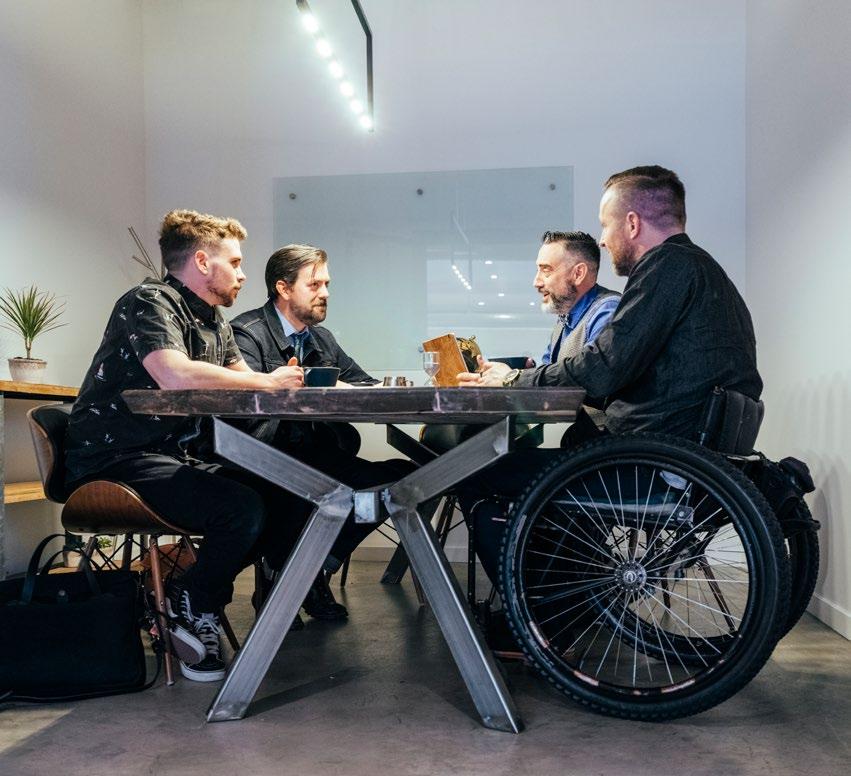
The space has power sockets and WiFi.
If the space is used as a temporary administration room for organisers, it should at least have a telephone, a copier and office supplies.
If it is used as a dressing room, there should be a table, sofa, wash basin, mirror etc.
Facilities for visitors, such as the cloakroom, lockers, baggage areas and sanitary facilities should be easy to reach from the foyer and clearly signposted in various areas of the meeting location. Ideally, they are located in the entrance area or adjacent to it. Your meeting location should have other facilities such as a storage room, server room etc. The layout and fittings in the space for employees should be carefully considered.
Your sanitary facilities should have a comfortable and high-quality appearance. There should be enough toilets for all participants. Take care to ensure they are accessible and gender-friendly. Are there multiple floors? Make sure the signage and accessibility are optimal.
The sanitary facilities have a luxurious appearance.
There is at least 1 toilet per 25 seats (capacity of large hall).
Two thirds of the toilets are reserved for women.
There are separate toilets for people with disabilities close to the halls (see also the legal standards).
There are gender-neutral toilets, indicated with a symbol (X).
Coat hooks are provided in each toilet
There are no unpleasant smells.
The cloakroom is ideally always manned. Is that not possible? If that is not possible, provide lockers for small luggage items and laptops. Some guests will arrive at your venue straight from the airport, so they have not yet had a chance to check in at their hotel. For them, it is essential that there is a secure luggage area.
In the run up to a conference (easily up to two weeks in advance), goods may arrive that need to be temporarily stored. During the conference, you also need space to safely store materials belonging to the organisers. You also need a space to store your own furniture, kitchen materials and stock out of sight.
You have a large enough cloakroom
You have lockers with sufficient space for small luggage and laptops.
You have a secure luggage area.
You provide storage space for the organisers’ materials.
You have sufficient storage space for your furniture and stock.
You should have an employee area. In this room, your team can carry out preparatory work and relax after peak moments. Arrange this environment in a practical and pleasant way, and ensure that it is inspiring. We recommend providing sanitary facilities that are reserved for employees.
You have a furnished employee area.
You provide separate sanitary facilities for your team of employees.
Combine hygiene and sustainability. n innovative sanitary rooms, hygiene and sustainability are perfectly paired. Hands-free sanitary facilities with sensors in doors, toilets, taps, hand dryers etc. guarantee a hygienic visit to the toilet. Sensors also prevent water and energy waste. Hands-free toilets are popular in Japan. There, music and fragrances make every toilet visit an experience.
Lockers with chargers.
Are your lockers due for an update? Consider installing lockers with built-in power sockets for charging mobile phones. Or provide special lockers for this. This means participants can charge their phones without missing their meetings. Guarantee that the participants’ phone data are protected while charging.
Organise your cloakroom.
Are several meetings being held with different organisers? Ensure that the cloakroom is well organised. Provide extra capacity, permanent cloakroom staff and, if possible, separate cloakrooms or compartments.
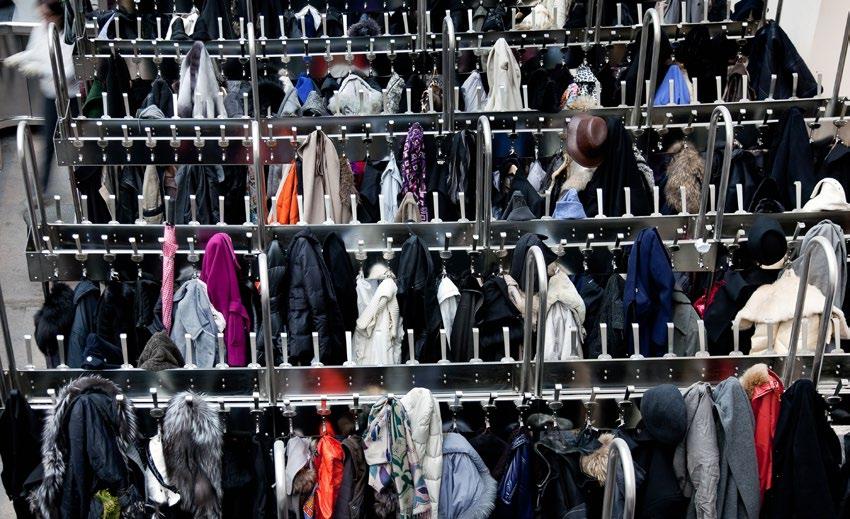
Your kitchen should be equipped according to the regulations for the hospitality industry. Important things to consider: hygienic storage of food and separation of your meeting rooms from the kitchen smells and noises. Ideally, the foyer, large halls and meeting rooms should be easily accessible from the kitchen. Do you work with external caterers? Then your kitchen must be suitable for further preparations.
Your kitchen has all the necessary utilities (electricity, water, drainage).
Your kitchen has an exhaust system.
You have a cold store or freezer room and storage room for the organiser/caterer.
You have sufficient storage space.
You effectively screen off sounds and odours.
The kitchen is large enough, so food can be prepared for multiple meetings (for multiple organisations).


Install a kitchenette.
Having a kitchenette in or close to the foyer, and on different floors, is very convenient. Here you can prepare coffee, cold drinks and other refreshments. You can also use this space for welcoming, receptions, lunch, dinner, etc. With a food lift you can easily deliver meals from the kitchen on the various floors.
Arrange outdoor spaces in a pleasant layout and use them multifunctionally. If the weather is nice, you can hold a break-out session, lunch or reception outside. Is the weather not so good? If the weather is bad, provide shelter, so participants can still get some fresh air. Schedule garden maintenance outside of meeting and conference hours!
There is comfortable seating outdoors.
You can host receptions, breaks and lunches outdoors. Provide cover or sun protection.
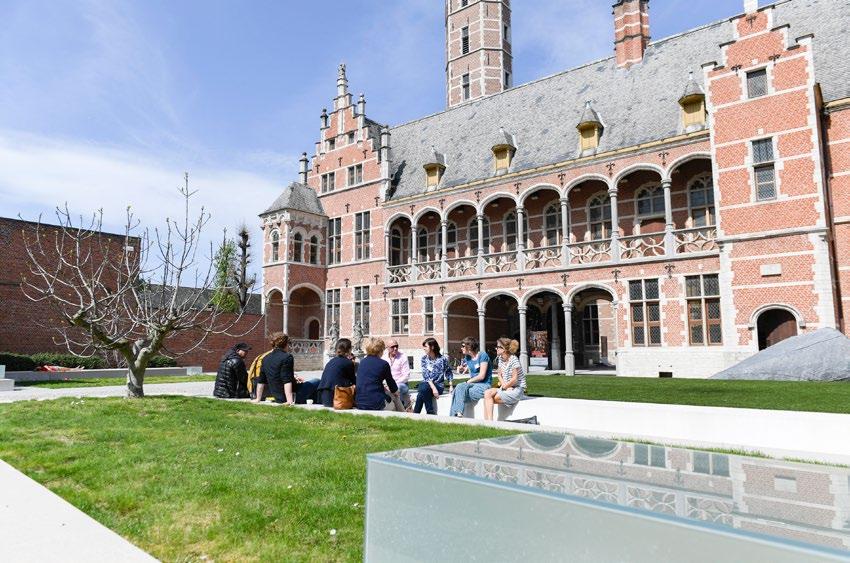
You can use the outdoor space as a break-out room.
Smoking is forbidden the terrace. There are clear signs to the areas where smoking is permitted.
Want a state-of-the-art venue that attracts international associations? Then, you must meet the following basic expectations.
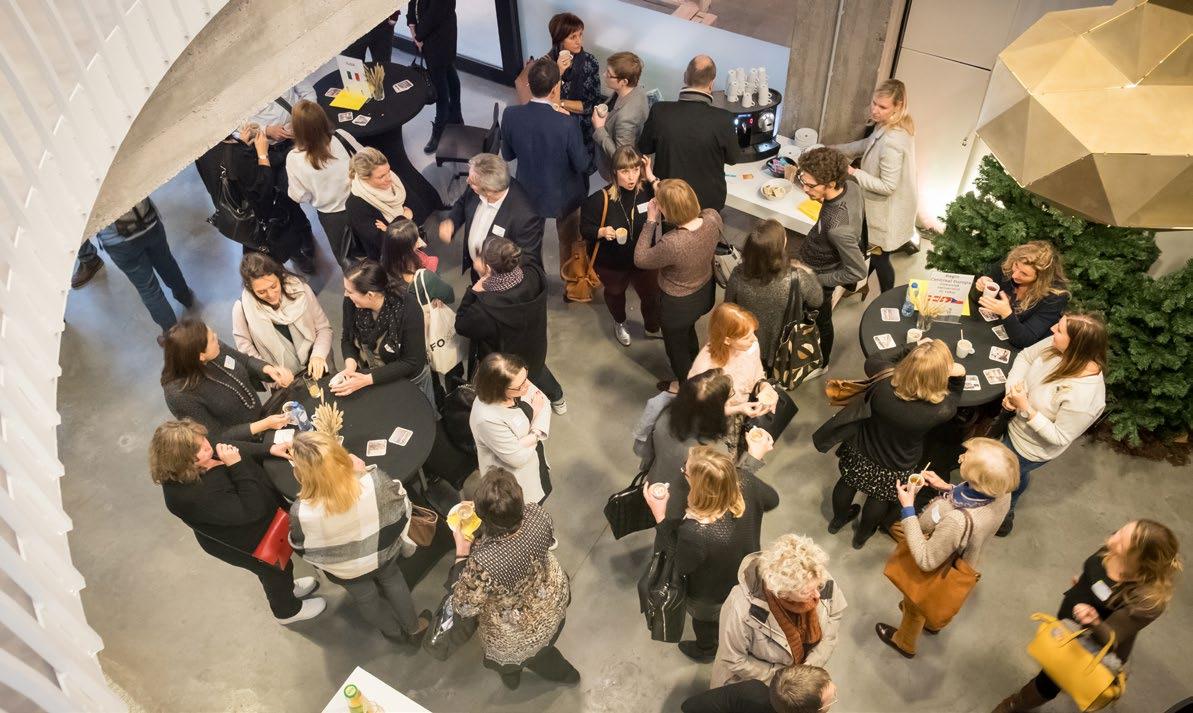
You have a strategic vision regarding the meeting industry and sustainability. You actively communicate this vision and implement it.
Your meeting location generates a local impact and maximum spillover via a network model with.
Your whole team displays masterful hospitality.
You have a multilingual and dedicated team that provides top-level service.
Your meeting is safe and accessible for everyone.
The catering is sustainable with exquisite food.
The appearance, quality and comfort are top class:
• plug-and-play equipment in all meeting room: flexible set-up options, entry points and cable covers. Back-up equipment is available,
• comfortable furniture,
• hygienic sanitary facilities,
no sound pollution or unpleasant odours,
quick and secure internet,
flexible air conditioning system and flexible lighting,
free water.
VISITFLANDERS wants to promote Flanders as an international top destination for meetings and conferences. To better respond to international expectations, VISITFLANDERS provides the Flemish meeting and conference sector with a professionalisation programme: a combination of quality tools, information, inspiration and education.
Under the name 'Meet in Flanders Academy' VISITFLANDERS organises training sessions for a wide audience of meeting locations, conference hotels, convention bureaus and professional conference organisers etc. Our venues are important ‘ambassadors for Flanders’ in the international meeting industry.
This brochure is the result of a collaboration with Michelle Accardo, Toon Berckmoes and Simon Stroo from IDEA Consult. The contents of this brochure are based on desk research of various studies, online sources and benchmarks, supplemented with the knowledge and experience of various experts. We thank Ton Soons (Vergaderhamers), Tamara Weide (BLCB), Jan Samyn (SEAUTON International), Christophe Voet (Martin’s Hotels) and Maarten Vanneste (Meeting Design Institute) for their cooperation. A sounding board of Flemish meeting locations also contributed advice. Thank you to Nicolas Vanden Eynden (ICC-Gent), Jan Simons (Lamot), Veerle De Bie and Inge Janvier (FMCCA), Wim Truyers (The Leuven Institute for Ireland in Europe), Annick Javor (Thor Central), Nikki van Veldhoven (De Hoorn), Liesbeth Milan (Engelenburcht), Veerle Peeters (ACB) and Marc Croes (UHasselt) for their advice based on their practical experience. Johan Veldeman (ZINNIG) edited and rewrote the text.
Peter De Wilde, VISITFLANDERS, Grasmarkt 61, 1000 Brussels, Belgium
LEGAL DEPOT D/2022/5635/35/4
CONTACT
Kwaliteitmeetingindustrie@toerismevlaanderen.be
Flanders special meeting venues | Toerisme Vlaanderen
VISITFLANDERS
All rights reserved. No part of this publication may be reproduced, stored in a database or retrieval system, or be published in any form or in any way (electronically, mechanically, by print, photoprint, microfilm or any other means) without prior written permission from the Publisher.